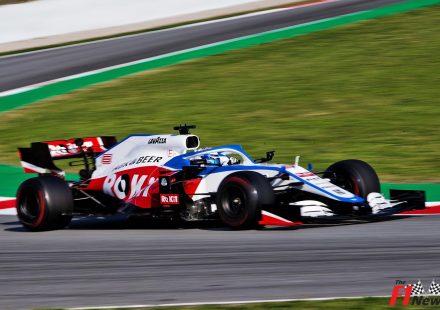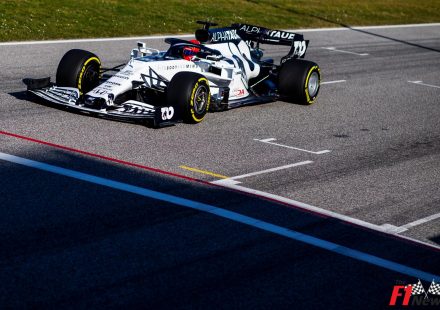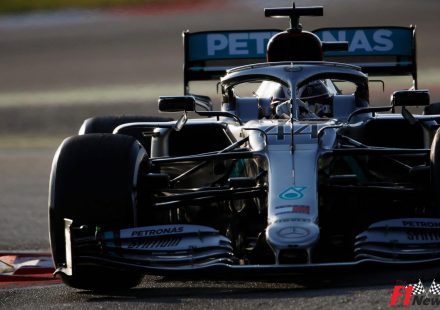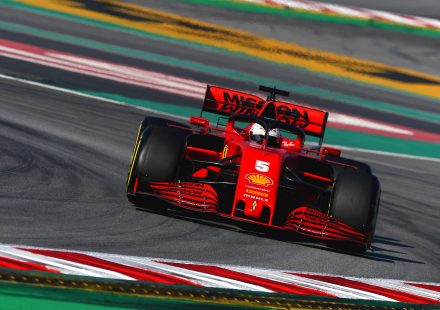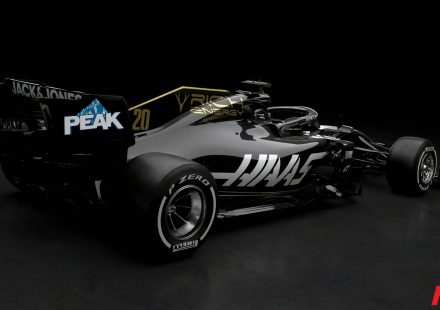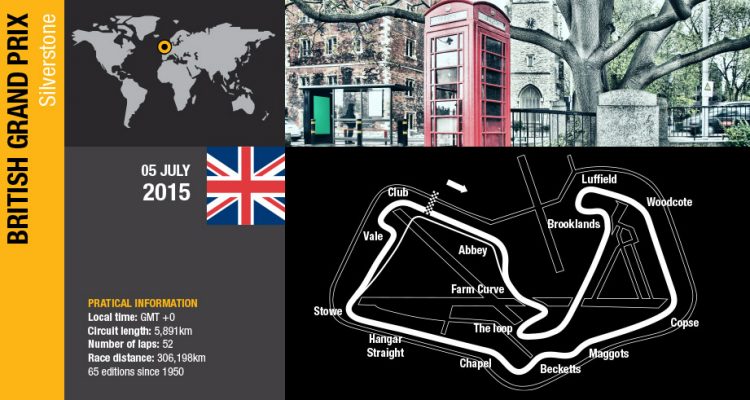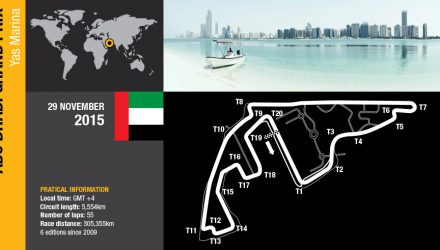RÉMI TAFFIN, DIRECTOR OF OPERATIONS
Silverstone is one of the key challenges of the year as every PU component is put to the test. There is a high percentage of wide open throttle time per lap and some slow, tricky complexes that need special attention so we need to look very carefully at the PU configuration to ensure we make the right choices and not compromise any area too much.
For the past four races we have had perfect reliability in our perimeter in race conditions and the British Grand Prix is perhaps the best opportunity for performance since Monaco as the high speed corners and slower complexes suit the car a lot better.
Furthermore we do not have the threat of penalties hanging over us. We are as motivated as ever, and on the ground we are working to move forward as quickly as we can.
RENAULT 2015 FAST FACTS
Jean-Pierre Jabouille became the first driver to ever compete in a championship race with a turbocharged engine when the Equipe Renault Elf team made its F1 debut at the 1977 British Grand Prix. Jabouille qualified in 21st (out of 36 entries) with a lap time of 1min 20.11 but the car retired after 16 laps. Six years later Alain Prost won the British Grand Prix in the Renault RE40, by which time almost half the field was using turbocharged engines.
Renault engines have won the British GP on 12 occasions. Alain Prost scored the first victory with the RE40 turbocharged engine in 1983. Williams dominated the 90s, winning six times with the V10 between 1991 and 1997. Johnny Herbert added another win for Benetton in 1995. The Renault V8 powered four victories between 2006 and 2012.
POWER UNIT DETAILS
ICE
Silverstone counts as one of the power tracks of the season, with 61% of the lap spent at full throttle in qualifying and 56% in the race, plus an average speed of well over 200kph. The circuit really tests the upper limits of the ICE. There are six sustained periods of wide open throttle over the 5.891km lap. The Hangar Straight is the longest straight at 875m, which translates to 12secs at full throttle. Top speed peaks at over 320kph with DRS open. The other straights are the old pit straight (750m), the straight from Stowe to Club (600m), the new pit straight (600m) and the Wellington Straight (700m). Additionally, the ICE will be flat out from Copse through to Chapel for approx. 2secs.
TURBOCHARGER
Smooth turbo response is very important at Silverstone as the high speed turns are interlinked. The sweeping Maggots-Beckett-Chapel complex, for instance, sees average speeds of around 225kph and no lower than 180kph at any one point. The driver needs to keep a rhythm going so he can roll through the complex rather than brake and accelerate repeatedly. Abbey, the first corner, is another corner where turbo response is key. The driver will lift off lightly at the end of the pit straight to scrub off some speed, taking it down to around 270kph. These conditions can lead to turbo surge to keep up with the changing engine demands. However, the driver needs the turbo to pick up quickly so he can keep the speed through to the Hairpin.
MGU-K
There are several low speed corners for the MGU-K to recover energy and keep the battery at a high level of charge. The Wellington Loop complex and Luffield are the most obvious corners to recover energy. The start of the Loop is Turn 3, a third gear right hander taken at around 100kph. The drivers then brake further to 85-90kph before accelerating up through the gears and onto the Wellington Straight. The energy dissipated to slow the car down through this complex is recovered by the MGU-K as much as possible.
Stowe presents another opportunity for the MGU-K as cars brake from well over 300kph to fifth gear and 180kph. Vale is the last big stop of the lap. The drivers approach at around 265-270kph and brake to 95kph before braking even further for Club, the 180° opening right hander that leads onto the start finish straight.
MGU-H
The interlinked high speed turns give a steady stream of exhaust. From Copse through to the end of the Hangar straight the car will have around 30secs of full or near-full throttle.
Some 55secs of the lap will be spent on the throttle, providing the MGU-H with multiple opportunities to recover energy. Fuel consumption at Silverstone will be high since the lap is long and quick but the H and K will be able to recover enough to mean that fuel saving won’t be a concern during the race to be within the FIA limits.
FOCUS ON…SILVERSTONE 1977
The 1977 British GP set down a historic milestone. Not only was it the first-ever GP for Renault, it was also the first-ever race for a turbocharged engine. Jean-Pierre Menrath, previously head of engine dyno testing for Renault Sport F1, was involved in running the crack RS01 at Silverstone. He remembers the groundbreaking race: ‘There were only 70 or 80 people in Viry at that time, with various projects on the go. We were preparing engines for the Le Mans 24 Hours, F2, F3, and then there was the F1 project. It was a very busy time so only about 15 people worked on the F1 chassis until Le Mans was completed.
‘The car was ready at the start of June in time for three test sessions at Paul Ricard, Dijon and then a final one at Silverstone one or two weeks before the race. We completed around 2,000km, which was satisfactory at the time. It went relatively well, but each time we went out we had a few niggles. There was nothing major, but there were some small issues, which is why we did not debut at the French Grand Prix, prior to the British GP. There were just a few too many risks and too much pressure at the home race.
‘It was nevertheless a major undertaking to go to the British GP. Everything was new: we had a turbo engine, which no one had tried before, a new chassis, a team who had never done F1 before – we had done various championships but never F1 – a new driver, and new tyres. Michelin had never entered F1 so it was their debut as well.
‘We got to Silverstone and at that stage over 30 cars were competing for a spot in the race. Only 26 were allowed to race, so there was pre-qualifying. Fortunately, Bernie had allowed us a pass through pre-quali as it was important for Renault to start the race at the very least.
‘So we went into qualifying on Friday and Saturday. On the Friday we had a bit of a tough start as we broke two turbos. Thankfully on Saturday everything went well. Before quali, our competitors were afraid of the Michelins so Goodyear had even brought special quali tyres. In the end we put in a good performance, but we qualified in 21st, around 1.3sec from pole. It was about in line with what we expected considering the mileage and our experience in F1.
‘We had an OK start to the race, especially given we were worried that the engine would hesitate off the line and we would get taken out by another car. We lost one place, but Jabouille got into a rhythm. Unfortunately then the air inlet collector broke and Jabouille had to come into the pits. We managed to change it quickly and get going again, but then the turbo went. Later on the turbos became much better, but at that stage they were notorious for having big operating differences. We were bitterly disappointed as we had fully expected to finish the race. The test had gone well and we hadn’t had that particular problem before.
‘After the race we went back home, looked at the problems, looked at cooling – it had been warm in Silverstone that year – and reworked the radiators. We looked at the turbo, which proved to be easy to modify. Overall, we did not change too much on engine – those huge changes came later when the car got more sophisticated.
‘We went on to do another three races that year and learned so much. Starting in F1 at that time was as hard as it is now, but the paddock took us seriously. We were learning as we went, learning about everything – brakes, aero, suspension, everything.
‘Looking back to that time, we seemed a little wet behind the ear. Everything evolved so quickly, and we believed that every modification we introduced would make us win. Realistically we did not know the level we needed to win, but we learned so much. When we came back in the 90s with Williams we knew exactly what it took.’

